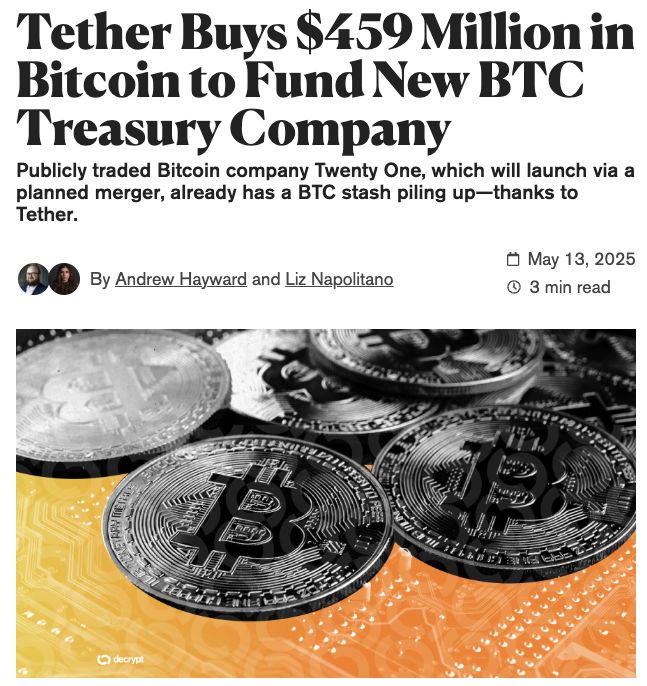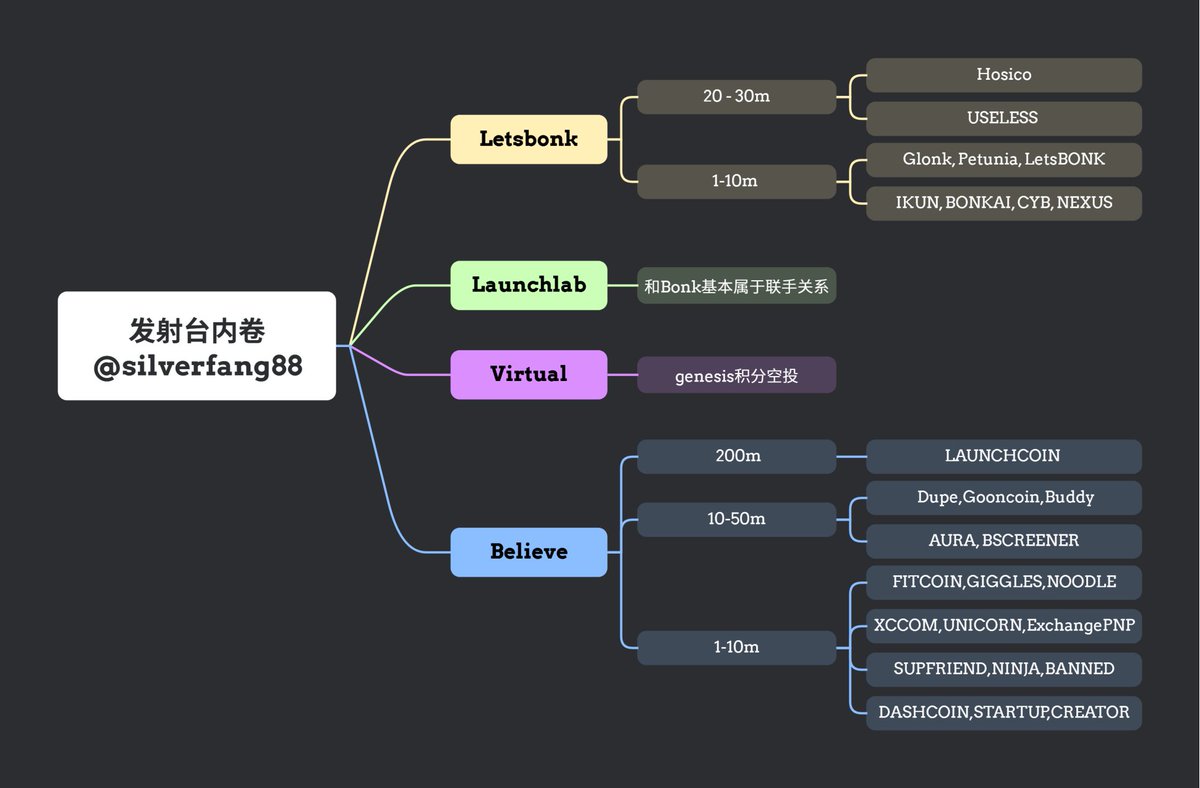
BONK
Bonk Kurs
$0,000023131
+$0,00000099400
(+4,49 %)
Preisänderung der letzten 24 Stunden

Was denken Sie heute über den BONK-Kurs?
Teilen Sie uns Ihre Meinung mit: Daumen nach oben, wenn Sie BTC und seinen Wert positiv sehen, oder Daumen nach unten, wenn Sie ihn negativ einschätzen.
Abstimmen und Ergebnisse anzeigen
BONK-Emittentenrisiko
Bitte treffen Sie alle Vorsichtsmaßnahmen und beachten Sie, dass dieser Krypto-Vermögenswert als hochriskantes Krypto-Vermögenswert eingestuft ist. Dieser Krypto-Vermögenswert hat keinen eindeutig identifizierbaren Emittenten oder/und kein etabliertes Projektteam, was seine Anfälligkeit für erhebliche Marktrisiken erhöht oder erhöhen kann, einschließlich, aber nicht beschränkt auf extreme Volatilität, geringe Liquidität oder/und das Potenzial für Marktmissbrauch oder Kursmanipulation. Es gibt keine absolute Garantie für den Wert, die Stabilität oder die Möglichkeit, diesen Krypto-Vermögenswert zu bevorzugten oder gewünschten Preisen zu verkaufen.
Haftungsausschluss
Der soziale Inhalt auf dieser Seite („Inhalt”), einschließlich, aber nicht beschränkt auf Tweets und Statistiken, die von LunarCrush bereitgestellt werden, stammt von Dritten und wird „wie er ist” ausschließlich zu Informationszwecken bereitgestellt. OKX übernimmt keine Garantie für die Qualität oder Richtigkeit des Inhalts, und der Inhalt spiegelt nicht die Ansichten von OKX wider. Die Inhalte dienen nicht dazu, (i) Anlageberatung oder Empfehlungen zu geben, (ii) ein Angebot oder eine Aufforderung zum Kauf, Verkauf oder Halten digitaler Vermögenswerte darzustellen oder (iii) finanzielle, buchhalterische, rechtliche oder steuerliche Beratung zu leisten. Digitale Assets, einschließlich Stablecoins und NFTs, bergen ein hohes Risiko, können stark schwanken und sogar wertlos werden. Preis und Leistung digitaler Vermögenswerte sind nicht garantiert und können sich ohne Vorankündigung ändern.<br></br>OKX gibt keine Anlage- oder Vermögensempfehlungen. Du solltest gut abwägen, ob der Handel und das Halten von digitalen Assets angesichts deiner finanziellen Situation sinnvoll ist. Bei Fragen zu deiner individuellen Situation wende dich bitte an deinen Rechts-/Steuer- oder Anlagenexperten. Weitere Einzelheiten findest du in unseren <a href="/help/terms-of-service">Nutzungsbedingungen</a> und der <a href="/help/risk-compliance-disclosure">Risikowarnung</a>. Durch die Nutzung der Website eines Drittanbieters („TPW“) akzeptieren Sie, dass jegliche Nutzung der TPW den Bedingungen der TPW unterliegt. Sofern nicht ausdrücklich schriftlich angegeben, steht OKX einschließlich seiner verbundenen Unternehmen („OKX“) in keinerlei Verbindung zum Eigentümer oder Betreiber der TPW. Sie stimmen zu, dass OKX nicht für Verluste, Schäden oder sonstige Folgen haftet, die sich aus Ihrer Nutzung der TPW ergeben. Bitte beachte, dass die Nutzung einer TPW zu einem Verlust oder einer Minderung deiner Assets führen kann. Das Produkt ist möglicherweise nicht in allen Ländern verfügbar.
Marktinformationen zu Bonk
Marktkapitalisierung
Die Marktkapitalisierung wird durch Multiplikation der Umlaufmenge des Coins mit dem letzten Preis berechnet.
Marktkapitalisierung = Umlaufmenge × letzter Preis
Marktkapitalisierung = Umlaufmenge × letzter Preis
Umlaufmenge
Gesamtmenge eines Coins, die auf dem Markt öffentlich verfügbar ist.
Ranking der Marktkapitalisierung
Platzierung des Coins in Bezug auf die Marktkapitalisierung.
Allzeithoch
Höchster Preis, den ein Coin in seiner Handelsgeschichte erreicht hat.
Allzeittief
Niedrigster Preis, den ein Coin in seiner Handelshistorie erreicht hat.
Marktkapitalisierung
$1,80B
Umlaufmenge
77.419.592.329.437 BONK
87,16 % von
88.819.163.188.153 BONK
Ranking der Marktkapitalisierung
46
Prüfungen

Letzte Prüfung: --
24-Std.-Hoch
$0,000025385
24-Std.-Tief
$0,000021804
Allzeithoch
$0,000060903
-62,02 % (-$0,00004)
Letzte Aktualisierung: 20. Nov. 2024
Allzeittief
$0,0000080000
+189,13 % (+$0,000015131)
Letzte Aktualisierung: 8. Jan. 2024
Bonk-Feed
Der folgende Inhalt stammt von .

TylerD 🧙♂️
Die Minute des Morgens (5.14)
⏰Top-Neuigkeiten:
-Krypto-Majors sind um 1-4% gestiegen, wobei ETH bei 2.625 $ führend ist
Robinhood erwirbt kanadisches Krypto-Unternehmen WonderFi für 180 Millionen US-Dollar
-Abraxas Capital Management kauft in der vergangenen Woche ~500 Mio. $ an ETH
-Das Launchcoin-Ökosystem erreicht eine Größe von 400 Mio. $ und verzeichnet tägliche Gebühren von 3,5 Mio. $
- CryptoPunks IP wurde von der Infinite Node Foundation für angeblich 20 Millionen US-Dollar übernommen
🌎Makro-Krypto und Memes
-Krypto-Majors sind im grünen Bereich, wobei ETH führend ist; BTC +1% bei 103.900 $, ETH +4,5% bei 2.600 $, XRP +3% bei 2,61 $, SOL +4% bei 180 $
-RAY (+16 %), PI (+13 %), WAL (+11 %) und ENA (+11 %) führten die Top-Alt-Mover an
-Der IBIT BTC ETF von BlackRock durchbrach seine 20-tägige Serie von Zuflüssen und blieb am Montag unverändert
- Tether hat 4.812 BTC (459 Mio. $) gekauft, um die Schatzkammer von 21 Capital zu säen, dem neuen, auf Bitcoin fokussierten Unternehmen, das über eine SPAC-Fusion mit Cantor Equity Partners an die Börse gehen soll
- Robinhood erwarb WonderFi für 180 Millionen US-Dollar, um seine Krypto-Dienste nach Kanada auszuweiten
-VanEck lancierte VBILL als ersten tokenisierten Treasury-Fonds auf ETH, SOL und anderen Chains, der von Securitzie tokenisiert wurde
-Solana hat ein 26-seitiges Papier über tokenisierte Aktien veröffentlicht, in dem sie darlegen, dass sie sich in einzigartiger Weise als Blockchain der Wahl qualifizieren
Ein Sprecher von Fidelity hielt eine Rede über Bitcoin, in der er Unternehmen fragte, ob sie mehr als 65% ihres investierten Kapitals zurückgeben, und wenn nicht, sie aufforderte, Bitcoin zu kaufen
-Abraxas Capital Management hat in der vergangenen Woche ETH im Wert von ~500 Mio. $ gekauft
- Galaxy Digital verzeichnete im ersten Quartal einen Nettoverlust von 295 Mio. $, kurz vor dem geplanten Debüt an der Nasdaq
Die Gouverneurin von Arizona, Katie Hobbs, legte ihr Veto gegen Gesetzentwürfe ein, die die Nutzung digitaler Vermögenswerte durch den Bundesstaat ausgeweitet hätten, unterzeichnete aber ein Gesetz, das strenge Vorschriften für Krypto-Geldautomaten auferlegte
In Memes
Die Memecoin-Anführer waren grün; DOGE +3%, Shiba +3%, PEPE +1%, TRUMP +5%, BONK +4% & FARTCOIN +5%
Launchcoin dominierte erneut den Solana-Markt, wobei das gesamte Ökosystem auf eine Marktkapitalisierung von 400 Mio. $ anstieg, angeführt von LAUNCHCOIN, der auf 220 Mio. $ (+90%)
GOONCOIN (+150 %), BSCREENER (+550 %) und AURA (+240 %) waren weitere bemerkenswerte Believe App Mover
💰 Token-, Airdrop- und Protokoll-Tracker
-Abstract-Chef Luca Netz hat am Dienstag einen Q4 TGE für $ABS angeteasert
-Die Believe-App generierte an diesem Tag ~3,5 Millionen US-Dollar an Gebühren, mehr als Pump Fun
-Kaito startete seine Partnerschaft mit Virtuals, wobei Yapper und sKAITO-Inhaber 5k+ KAITO einsetzten, um Virtuals Virgen-Punkte zu sammeln
-Ethos hat 256 Ethos Validator NFTs an seine Top-Mitwirkenden abgeworfen, die bei einem ETH-Boden von 2,5 ETH eröffnet wurden
-Hyperliquid hat seiner Plattform den Fartcoin-Spothandel hinzugefügt
🤖 KI x Krypto
-Die Gesamtmarktkapitalisierung stieg um 1% auf 11,4 Mrd. $, die Spitzenreiter waren gemischt
-FARTCOIN (+5%), VIRTUAL (-2%), AI16z (-1%), GOAT (-8%) und AIXBT (gerade)
-SHOGGOTH (+50 %), VVAIFU (+30 %), BNKR (+30 %) und CLANKER (+25 %) führten bemerkenswerte Aufsteiger an
-Virtuell geführter Mindshare mit einem Anteil von 20 %; Fartcoin und REKT sind die nächsten
-Coinbase fügt verschlüsselte Nachrichten hinzu, die eine KI-Agenten-Kommunikation für seine Coinbase Wallet ermöglichen.
🚚 Was passiert bei NFTs?
-ETH NFT-Anführer mischen sich mit Punks an der Spitze; Punks +3% bei 47.5 ETH, Pudgy -5% bei 10.6, BAYC -3% bei 12.1 ETH
-Chubbicorns (48 %) und Moncats (+20 %) führten bemerkenswerte Aufsteiger an
-CryptoPunks sprangen auf 48 ETH (128.000 $), nachdem die Nachricht von ihrer Übernahme durch die Infinite Node Foundation bekannt wurde.
-BTC NFT-Marktführer waren wieder sehr grün; Taproot Wizards +5% bei 0,204 BTC, Bitcoin Puppets +3%, NodeMonkes +6%, OMB +21%, Quantum Cats sogar
-Abstract NFTs wurden auf OpenSea live geschaltet, was dazu führte, dass die meisten Sammlungen um 10-20% stiegen
-Refik Anadol verkaufte sein Projekt "Biome Lumina" innerhalb von 25 Minuten, das aus 1000 Teilen zu 5.000 US-Dollar pro Stück (5 Mio. US-Dollar Erhöhung) bestand, jetzt bei 3,15 ETH
-Meebits Wearables wurden in Zusammenarbeit mit PlayerZero auf OpenSea zum Minting live geschaltet
Original anzeigen



95.181
31

子时
<发射台内卷>
Das politische Muster der bonk+ray pump bildet sich
Es ist klar, dass die Kräfte innerhalb der SOL gespalten sind
PUMP will Rays Kuchen bewegen
führte zu einem gewaltsamen Gegenangriff der Gruppe innerhalb der SOL
Aber der Mund kann den Teller nicht ziehen
Es gab keinen klaren Wasserhahn
Das meiste Geld stammt aus der Geschwindigkeit des Drachen
Believe ist zurück nach dem Projekt-Pivot im letzten Jahr
Dahinter steckt eindeutig Geld, das bereit ist zu wetten
Sich auf echtes Geld verlassen, um den Teller zu ziehen
Ryuichi Ryuji und andere Gegenstände sind klar bewertet
Virtuell fühlt sich ähnlich an wie die Alpha-Logik von Binance
Der Vermögenseffekt des neuen Projekts im Involutionsteil
Obwohl das Projekt von SOL einfach ist
Es ist schwierig, Binance Alpha/Futures/Spot aufzulisten
Es gibt jedoch immer noch genügend ausländische Communities und Münzspekulationsgruppen in SOL
Der natürliche Fluss ist groß genug, und das Körpergefühl ist 10-20 Mal so hoch wie bei den BSC-Leuten
Obwohl die Projekte von BSC sehr einfach in die Alpha-Phase zu bringen sind
Es ist schade, dass viele der Elemente wie IELTS-Aufsätze sind
Es ist, als stünde man der Poesie des Heiligen Herrn gegenüber
Hör- und Leseverständnis testen
Das neue Vermögenssystem löst sich von der gesamten CEX
Schmetterlinge schlagen mit den Flügeln
Es sind die Börsen der zweiten Reihe, die unangenehm sind
Meme braucht sie nicht mehr
VC-Coins brauchen sie nicht mehr
Gute Nacht, Maka Baka
Original anzeigen
21.378
35

Carlos | Gambulls.com
Du weißt, dass sie OG sind, wenn sie sich hinter dem $BONK Team versammeln.
Proaktiv zu sein, Belohnungen anzubieten und Geld im Ökosystem zu halten, ist ein viel besseres Team, das man unterstützen kann, als eines, das reagiert und etwas zurückgeben oder fallen "muss".
Die Straßen vergessen nicht die Multi-Millionen-Dollar-Verkäufe auf Kraken.
Original anzeigen9.304
17
BONK-Rechner


Bonk Preisentwicklung in USD
Der aktuelle Preis von Bonk liegt bei $0,000023131. In den letzten 24 Stunden ist Bonk um +4,49 % gestiegen. Der Coin hat derzeit eine Umlaufmenge von 77.419.592.329.437 BONK und eine maximale Versorgung von 88.819.163.188.153 BONK, was eine vollständig verwässerte Marktkapitalisierung von $1,80B ergibt. In der Rangliste der Marktkapitalisierung belegt der Bonk-Coin derzeit die Position 46. Der Bonk/USD-Kurs wird in Echtzeit aktualisiert.
Heute
+$0,00000099400
+4,49 %
7 Tage
+$0,0000060660
+35,54 %
30 Tage
+$0,0000099940
+76,07 %
3 Monate
+$0,0000056210
+32,10 %
Beliebte Bonk-Konvertierungen
Letzte Aktualisierung: 14.05.2025, 22:09
Über Bonk (BONK)
Die angegebene Bewertung ist eine aggregierte Bewertung, die von OKX aus den angegebenen Quellen gesammelt wurde und nur zu Informationszwecken dient. OKX übernimmt keine Garantie für die Qualität oder Richtigkeit der Bewertungen. Es ist nicht beabsichtigt, (i) eine Anlageberatung oder -empfehlung, (ii) ein Angebot oder eine Aufforderung zum Kauf, Verkauf oder Halten von digitalen Vermögenswerten oder (iii) eine Finanz-, Buchhaltungs-, Rechts- oder Steuerberatung anzubieten. Digitale Vermögenswerte, einschließlich Stablecoins und NFTs, sind mit einem hohen Risiko behaftet, ihr Wert kann stark schwanken und sie können sogar wertlos werden. Der Preis und die Wertentwicklung der digitalen Vermögenswerte sind nicht garantiert und können sich ohne vorherige Ankündigung ändern. Ihre digitalen Vermögenswerte sind nicht durch eine Versicherung gegen mögliche Verluste abgedeckt. Historische Renditen sind kein Indikator für zukünftige Renditen. OKX garantiert keine Rendite, Rückzahlung von Kapital oder Zinsen. OKX gibt keine Anlage- oder Vermögensempfehlungen ab. Sie sollten sorgfältig abwägen, ob der Handel mit oder das Halten von digitalen Vermögenswerten angesichts Ihrer finanziellen Situation für Sie geeignet ist. Bitte konsultieren Sie Ihren Rechts-/Steuer-/Anlageexperten, wenn Sie Fragen bezüglich Ihrer individuellen Gegebenheiten haben.
Mehr anzeigen
- Offizielle Website
- Whitepaper
- Block Explorer
Über Websites von Drittanbietern
Über Websites von Drittanbietern
Durch die Nutzung der Website eines Drittanbieters (Third-Party Website, „TPW“) akzeptieren Sie, dass jegliche Nutzung der TPW den Bedingungen der TPW unterliegt und durch diese geregelt wird. Sofern nicht ausdrücklich schriftlich anders angegeben, stehen OKX und seine verbundenen Unternehmen („OKX“) in keiner Weise mit dem Eigentümer oder Betreiber der TPW in Verbindung. Sie erklären sich damit einverstanden, dass OKX nicht für Verluste, Schäden und sonstige Folgen haftet, die sich aus Ihrer Nutzung der TPW ergeben. Bitte beachten Sie, dass die Nutzung einer TPW zu einem Verlust oder einer Minderung Ihres Vermögens führen kann.
Häufig gestellte Fragen zum Bonk-Preis
Wie viel ist 1 Bonk heute wert?
Aktuell ist ein Bonk $0,000023131 wert. Wenn Sie Antworten und Einblicke in das Preisgeschehen von Bonk suchen, sind Sie hier genau an der richtigen Stelle. Entdecken Sie die neuesten Bonk-Charts und handeln Sie verantwortungsbewusst mit OKX.
Was ist eine Kryptowährung?
Kryptowährungen, wie etwa Bonk, sind digitale Vermögenswerte, die auf einem öffentlichen Hauptbuch namens Blockchains betrieben werden. Erfahren Sie mehr über die auf OKX angebotenen Coins und Tokens sowie deren unterschiedlichen Eigenschaften, einschließlich Live-Preisen und Charts in Echtzeit.
Wann wurden Kryptowährungen erfunden?
Dank der Finanzkrise von 2008 ist das Interesse an einem dezentralen Finanzwesen rasant gestiegen. Bitcoin bot als sicherer digitaler Vermögenswert auf einem dezentralen Netzwerk eine neuartige Lösung. Seitdem wurden auch viele andere Token, wie etwa Bonk, erstellt.
Wird der Preis von Bonk heute steigen?
Auf unserer Bonk-Seite für Preisprognosen finden Sie Prognosen zukünftiger Preise und können Ihre Preisziele bestimmen.
ESG-Offenlegung
ESG-Regulierungen (Umwelt, Soziales und Governance) für Krypto-Vermögenswerte zielen darauf ab, ihre Umweltauswirkungen (z. B. energieintensives Mining) zu adressieren, Transparenz zu fördern und ethische Governance-Praktiken zu gewährleisten, um die Krypto-Industrie mit breiteren Nachhaltigkeits- und gesellschaftlichen Zielen in Einklang zu bringen. Diese Vorschriften fördern die Compliance mit Standards, die Risiken mindern und das Vertrauen in digitale Vermögenswerte stärken.
Details zum Vermögenswert
Name
OKcoin Europe LTD
Kennung der relevanten juristischen Person
54930069NLWEIGLHXU42
Name des Krypto-Vermögenswerts
Bonk
Konsensmechanismus
Bonk is present on the following networks: base, binance_smart_chain, solana.
The consensus mechanism of the Base protocol, an Ethereum Layer 2 solution launched by Coinbase, utilizes Optimistic Rollups for scaling built on the Optimism software development kit (SDK). Key Components: 1. Optimistic Rollups: Assumption of Validity: Transactions are assumed valid by default and are processed off-chain. Instead of proving the validity of every transaction, the system assumes they are correct unless challenged. Fraud Proofs: If there is a suspicion of fraud, a challenge mechanism (fault proof) allows anyone to dispute the validity of a transaction within a specific time frame. If a transaction is found to be fraudulent, it is rolled back, and the dishonest actor is penalized. 2. Sequencer: Transaction Ordering: The sequencer is responsible for ordering transactions and creating batches to be processed off-chain. Block Production: It constructs and executes Layer 2 blocks, which are then submitted to Ethereum (Layer 1) for finality. State Updates: Provides transaction confirmations and state updates, ensuring the network's state remains consistent and accurate. 3. Interaction with Ethereum: On-Chain Contracts: Optimistic Rollups use smart contracts deployed on Ethereum to manage rollup blocks, monitor state updates, and track user deposits. Off-Chain Computation: Most computations and state storage occur off-chain, enhancing scalability and reducing fees. 4. Security and Decentralization: Modular OP Stack: Base is built on the open-source OP Stack from Optimism, which is designed to be highly modular and customizable. Commitment Posting: Periodically, the post-transaction state is committed to Ethereum, ensuring the security and integrity of the Layer 2 transactions. Censorship Resistance: The architecture provides censorship resistance equivalent to Ethereum, as it allows direct submission of transactions to the sequencer.
Binance Smart Chain (BSC) uses a hybrid consensus mechanism called Proof of Staked Authority (PoSA), which combines elements of Delegated Proof of Stake (DPoS) and Proof of Authority (PoA). This method ensures fast block times and low fees while maintaining a level of decentralization and security. Core Components 1. Validators (so-called “Cabinet Members”): Validators on BSC are responsible for producing new blocks, validating transactions, and maintaining the network’s security. To become a validator, an entity must stake a significant amount of BNB (Binance Coin). Validators are selected through staking and voting by token holders. There are 21 active validators at any given time, rotating to ensure decentralization and security. 2. Delegators: Token holders who do not wish to run validator nodes can delegate their BNB tokens to validators. This delegation helps validators increase their stake and improves their chances of being selected to produce blocks. Delegators earn a share of the rewards that validators receive, incentivizing broad participation in network security. 3. Candidates: Candidates are nodes that have staked the required amount of BNB and are in the pool waiting to become validators. They are essentially potential validators who are not currently active but can be elected to the validator set through community voting. Candidates play a crucial role in ensuring there is always a sufficient pool of nodes ready to take on validation tasks, thus maintaining network resilience and decentralization. Consensus Process 4. Validator Selection: Validators are chosen based on the amount of BNB staked and votes received from delegators. The more BNB staked and votes received, the higher the chance of being selected to validate transactions and produce new blocks. The selection process involves both the current validators and the pool of candidates, ensuring a dynamic and secure rotation of nodes. 5. Block Production: The selected validators take turns producing blocks in a PoA-like manner, ensuring that blocks are generated quickly and efficiently. Validators validate transactions, add them to new blocks, and broadcast these blocks to the network. 6. Transaction Finality: BSC achieves fast block times of around 3 seconds and quick transaction finality. This is achieved through the efficient PoSA mechanism that allows validators to rapidly reach consensus. Security and Economic Incentives 7. Staking: Validators are required to stake a substantial amount of BNB, which acts as collateral to ensure their honest behavior. This staked amount can be slashed if validators act maliciously. Staking incentivizes validators to act in the network's best interest to avoid losing their staked BNB. 8. Delegation and Rewards: Delegators earn rewards proportional to their stake in validators. This incentivizes them to choose reliable validators and participate in the network’s security. Validators and delegators share transaction fees as rewards, which provides continuous economic incentives to maintain network security and performance. 9. Transaction Fees: BSC employs low transaction fees, paid in BNB, making it cost-effective for users. These fees are collected by validators as part of their rewards, further incentivizing them to validate transactions accurately and efficiently.
Solana uses a unique combination of Proof of History (PoH) and Proof of Stake (PoS) to achieve high throughput, low latency, and robust security. Here’s a detailed explanation of how these mechanisms work: Core Concepts 1. Proof of History (PoH): Time-Stamped Transactions: PoH is a cryptographic technique that timestamps transactions, creating a historical record that proves that an event has occurred at a specific moment in time. Verifiable Delay Function: PoH uses a Verifiable Delay Function (VDF) to generate a unique hash that includes the transaction and the time it was processed. This sequence of hashes provides a verifiable order of events, enabling the network to efficiently agree on the sequence of transactions. 2. Proof of Stake (PoS): Validator Selection: Validators are chosen to produce new blocks based on the number of SOL tokens they have staked. The more tokens staked, the higher the chance of being selected to validate transactions and produce new blocks. Delegation: Token holders can delegate their SOL tokens to validators, earning rewards proportional to their stake while enhancing the network's security. Consensus Process 1. Transaction Validation: Transactions are broadcast to the network and collected by validators. Each transaction is validated to ensure it meets the network’s criteria, such as having correct signatures and sufficient funds. 2. PoH Sequence Generation: A validator generates a sequence of hashes using PoH, each containing a timestamp and the previous hash. This process creates a historical record of transactions, establishing a cryptographic clock for the network. 3. Block Production: The network uses PoS to select a leader validator based on their stake. The leader is responsible for bundling the validated transactions into a block. The leader validator uses the PoH sequence to order transactions within the block, ensuring that all transactions are processed in the correct order. 4. Consensus and Finalization: Other validators verify the block produced by the leader validator. They check the correctness of the PoH sequence and validate the transactions within the block. Once the block is verified, it is added to the blockchain. Validators sign off on the block, and it is considered finalized. Security and Economic Incentives 1. Incentives for Validators: Block Rewards: Validators earn rewards for producing and validating blocks. These rewards are distributed in SOL tokens and are proportional to the validator’s stake and performance. Transaction Fees: Validators also earn transaction fees from the transactions included in the blocks they produce. These fees provide an additional incentive for validators to process transactions efficiently. 2. Security: Staking: Validators must stake SOL tokens to participate in the consensus process. This staking acts as collateral, incentivizing validators to act honestly. If a validator behaves maliciously or fails to perform, they risk losing their staked tokens. Delegated Staking: Token holders can delegate their SOL tokens to validators, enhancing network security and decentralization. Delegators share in the rewards and are incentivized to choose reliable validators. 3. Economic Penalties: Slashing: Validators can be penalized for malicious behavior, such as double-signing or producing invalid blocks. This penalty, known as slashing, results in the loss of a portion of the staked tokens, discouraging dishonest actions.
Anreizmechanismen und anfallende Gebühren
Bonk is present on the following networks: base, binance_smart_chain, solana.
Base, an Ethereum Layer 2 scaling solution, uses a combination of economic incentives and security mechanisms to ensure the integrity and security of transactions. Base leverages Optimistic Rollups to enhance scalability while maintaining security. Incentive Mechanisms 1. Validators and Sequencers: Sequencers: In Base, sequencers are responsible for ordering transactions and creating batches that are processed off-chain. They play a crucial role in maintaining network efficiency and throughput. Validator Rewards: Validators earn rewards for participating in the consensus process. These rewards can include transaction fees and additional protocol incentives. 2. Economic Incentives: Transaction Fees: Sequencers earn transaction fees from users who want their transactions processed. These fees incentivize sequencers to operate honestly and efficiently. Challenge Rewards: Users who successfully challenge invalid transactions by submitting fraud proofs are rewarded. This mechanism encourages the community to actively monitor and ensure the correctness of transactions. 3. Penalties for Malicious Behavior: Economic Penalties: Validators or sequencers that act maliciously, such as including invalid transactions, face economic penalties. These penalties can include forfeiture of staked tokens or other forms of economic loss. Fraud Proofs: If a transaction is challenged and found to be invalid, the dishonest party (sequencer) faces penalties, and the state is reverted. This discourages malicious behavior and ensures network integrity. Fees Applicable on the Base Blockchain Protocol 1. Transaction Fees: Layer 2 Transaction Fees: Users pay fees for transactions processed on the Layer 2 network. These fees are typically lower than those on the Ethereum mainnet due to the reduced computational load on the main chain. Cost Efficiency: By aggregating multiple transactions into a single batch, Base reduces the overall cost per transaction, making it more economical for users. 2. L1 Data Fees: Posting Batches to Ethereum: Periodically, state updates from Layer 2 transactions are posted to the Ethereum mainnet as calldata. This involves a fee, known as the L1 data fee, which covers the gas cost of publishing these state updates on Ethereum. Cost Sharing: The fixed costs of posting state updates to Ethereum are spread across multiple transactions within a batch, reducing the cost burden on individual transactions. 3. Smart Contract Fees: Execution Costs: Fees for deploying and interacting with smart contracts on Base are based on the computational resources required. This ensures that users are charged proportionally for the resources they consume.
Binance Smart Chain (BSC) uses the Proof of Staked Authority (PoSA) consensus mechanism to ensure network security and incentivize participation from validators and delegators. Incentive Mechanisms 1. Validators: Staking Rewards: Validators must stake a significant amount of BNB to participate in the consensus process. They earn rewards in the form of transaction fees and block rewards. Selection Process: Validators are selected based on the amount of BNB staked and the votes received from delegators. The more BNB staked and votes received, the higher the chances of being selected to validate transactions and produce new blocks. 2. Delegators: Delegated Staking: Token holders can delegate their BNB to validators. This delegation increases the validator's total stake and improves their chances of being selected to produce blocks. Shared Rewards: Delegators earn a portion of the rewards that validators receive. This incentivizes token holders to participate in the network’s security and decentralization by choosing reliable validators. 3. Candidates: Pool of Potential Validators: Candidates are nodes that have staked the required amount of BNB and are waiting to become active validators. They ensure that there is always a sufficient pool of nodes ready to take on validation tasks, maintaining network resilience. 4. Economic Security: Slashing: Validators can be penalized for malicious behavior or failure to perform their duties. Penalties include slashing a portion of their staked tokens, ensuring that validators act in the best interest of the network. Opportunity Cost: Staking requires validators and delegators to lock up their BNB tokens, providing an economic incentive to act honestly to avoid losing their staked assets. Fees on the Binance Smart Chain 5. Transaction Fees: Low Fees: BSC is known for its low transaction fees compared to other blockchain networks. These fees are paid in BNB and are essential for maintaining network operations and compensating validators. Dynamic Fee Structure: Transaction fees can vary based on network congestion and the complexity of the transactions. However, BSC ensures that fees remain significantly lower than those on the Ethereum mainnet. 6. Block Rewards: Incentivizing Validators: Validators earn block rewards in addition to transaction fees. These rewards are distributed to validators for their role in maintaining the network and processing transactions. 7. Cross-Chain Fees: Interoperability Costs: BSC supports cross-chain compatibility, allowing assets to be transferred between Binance Chain and Binance Smart Chain. These cross-chain operations incur minimal fees, facilitating seamless asset transfers and improving user experience. 8. Smart Contract Fees: Deployment and Execution Costs: Deploying and interacting with smart contracts on BSC involves paying fees based on the computational resources required. These fees are also paid in BNB and are designed to be cost-effective, encouraging developers to build on the BSC platform.
Solana uses a combination of Proof of History (PoH) and Proof of Stake (PoS) to secure its network and validate transactions. Here’s a detailed explanation of the incentive mechanisms and applicable fees: Incentive Mechanisms 4. Validators: Staking Rewards: Validators are chosen based on the number of SOL tokens they have staked. They earn rewards for producing and validating blocks, which are distributed in SOL. The more tokens staked, the higher the chances of being selected to validate transactions and produce new blocks. Transaction Fees: Validators earn a portion of the transaction fees paid by users for the transactions they include in the blocks. This provides an additional financial incentive for validators to process transactions efficiently and maintain the network's integrity. 5. Delegators: Delegated Staking: Token holders who do not wish to run a validator node can delegate their SOL tokens to a validator. In return, delegators share in the rewards earned by the validators. This encourages widespread participation in securing the network and ensures decentralization. 6. Economic Security: Slashing: Validators can be penalized for malicious behavior, such as producing invalid blocks or being frequently offline. This penalty, known as slashing, involves the loss of a portion of their staked tokens. Slashing deters dishonest actions and ensures that validators act in the best interest of the network. Opportunity Cost: By staking SOL tokens, validators and delegators lock up their tokens, which could otherwise be used or sold. This opportunity cost incentivizes participants to act honestly to earn rewards and avoid penalties. Fees Applicable on the Solana Blockchain 7. Transaction Fees: Low and Predictable Fees: Solana is designed to handle a high throughput of transactions, which helps keep fees low and predictable. The average transaction fee on Solana is significantly lower compared to other blockchains like Ethereum. Fee Structure: Fees are paid in SOL and are used to compensate validators for the resources they expend to process transactions. This includes computational power and network bandwidth. 8. Rent Fees: State Storage: Solana charges rent fees for storing data on the blockchain. These fees are designed to discourage inefficient use of state storage and encourage developers to clean up unused state. Rent fees help maintain the efficiency and performance of the network. 9. Smart Contract Fees: Execution Costs: Similar to transaction fees, fees for deploying and interacting with smart contracts on Solana are based on the computational resources required. This ensures that users are charged proportionally for the resources they consume.
Beginn des Zeitraums, auf die sich die Angaben beziehen
2024-04-20
Ende des Zeitraums, auf die sich die Angaben beziehen
2025-04-20
Energiebericht
Energieverbrauch
1592.26460 (kWh/a)
Quellen und Verfahren im Bezug auf den Energieverbrauch
The energy consumption of this asset is aggregated across multiple components:
To determine the energy consumption of a token, the energy consumption of the network(s) base, binance_smart_chain, solana is calculated first. Based on the crypto asset's gas consumption per network, the share of the total consumption of the respective network that is assigned to this asset is defined. When calculating the energy consumption, we used - if available - the Functionally Fungible Group Digital Token Identifier (FFG DTI) to determine all implementations of the asset of question in scope and we update the mappings regulary, based on data of the Digital Token Identifier Foundation.
BONK-Rechner


















Soziales